Here’s the situation: the weather is getting warmer and we’re about to enter our brief 1-week (2 weeks if we’re lucky) heatwave that constitutes a British summer. When the hot weather arrives, should you mow your lawn? Or is it best to keep your lawn mower in the shed until the temperature drops back down again?
I’ve put my 15+ years of lawn care knowledge to good use and answered these questions in this guide to mowing the lawn in hot weather.
✅ Key Takeaways:
You can in theory now your lawn in hot weather, but it’s best not to if it’s very hot because mowing will worsen the stress that the grass is under.
Especially avoid mowing your lawn if you have a new lawn, it’s been hot for over a week, and there hasn’t been any rainfall during this period.
If you have to mow your lawn when it’s very hot, raise your mower blades to cut less off the grass and thoroughly water your lawn once you’ve finished.
Table of Contents
🥵 Can You Mow The Lawn In Hot Weather?
Yes, you can mow the lawn in hot weather, but I advise you not to do so if the weather has been very hot (we’re talking anything above 23-25 degrees Celcius) and dry for over a week.
Your lawn is probably already suffering from heat stress, so mowing the grass will only make it more stressed. The grass probably won’t grow much during a heatwave anyway, so you may as well hold off mowing until the true UK summer (aka clouds and rain with the occasional sunny spell) returns.
❌ What’s Wrong With Mowing The Lawn When It’s Very Hot?
The problem with mowing the lawn when it’s very hot is that your lawn is likely already suffering in the hot, dry weather, and mowing your lawn is only going to make matters worse.
Let’s imagine we’re having a heatwave and temperatures are around the 28-32 degrees C range for 10 days. By day 2 or 3, your lawn will already be beginning to display signs of heat stress, including wilted or curled blades of grass that have yellow or brown colouration.
Now let’s imagine that you mow your lawn and remove around one-third of the grass leaves. That means that one-third of the water that the grass blades had managed to hold onto has now been taken away, so the grass becomes more stressed due to the additional moisture loss and suffers worsened effects of heat exposure.
Plus, longer grass helps the soil beneath to hold onto moisture, while shorter grass doesn’t shade the soil, and water is lost due to evaporation at a faster rate. So, mowing your grass shorter will reduce its ability to prevent moisture loss in the soil, causing it to dry out faster.
When it’s very hot, you need to be supporting your grass rather than making the situation worse. So, ideally, you should avoid mowing your lawn and focus on keeping your lawn fed and watered during periods of very hot weather.
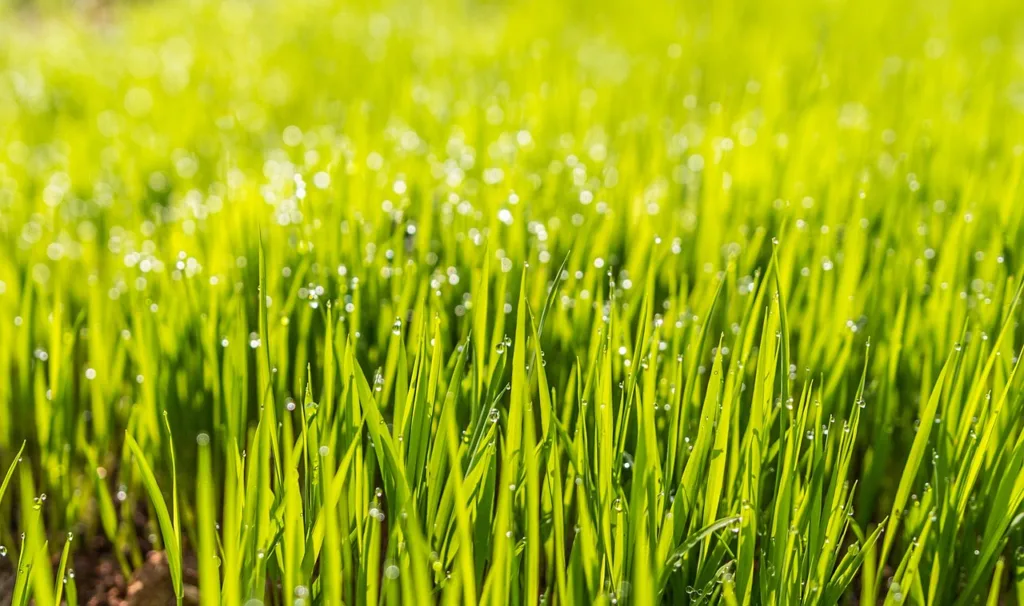
🤒 What Temperature Is Too Hot For Mowing The Lawn?
Generally, you should avoid mowing your lawn if the temperature has exceeded 25-25 degrees Celcius for more than a week and there has been no rainfall.
Most grass types used on UK lawns are cool-season grasses, which means they’re less tolerant to warm weather. Even though 23 degrees C is hardly considered extreme heat even by British standards, it’s still hot enough to dry out your lawn – especially if it hasn’t rained in a while.
The best way to know if it’s too hot for mowing the lawn is to pluck a grass blade out of the ground and inspect it. If the blade is green and flexible, it should still have plenty of moisture, and you shouldn’t damage it by mowing. If the blade is yellowed at the tip or all over, and feels crisp or dry to touch, it’s best to avoid cutting your lawn.
🤷♂️ What Factors Affect A Lawn’s Ability To Withstand Hot Weather?
There are a few factors that affect a lawn’s ability to withstand warm temperatures:
🌱 New Vs Established Lawn
The age of the lawn affects how it responds to exposure to hot weather.
A new lawn has a shallower root bed and can’t handle high temperatures and low moisture as well as established turf, which has thicker roots and can better hold onto moisture from earlier rainfall, so it’s not as affected by hot, dry spells.
So, if you have newly laid turf, you especially need to look after your lawn and avoid mowing when the weather is hot and dry.
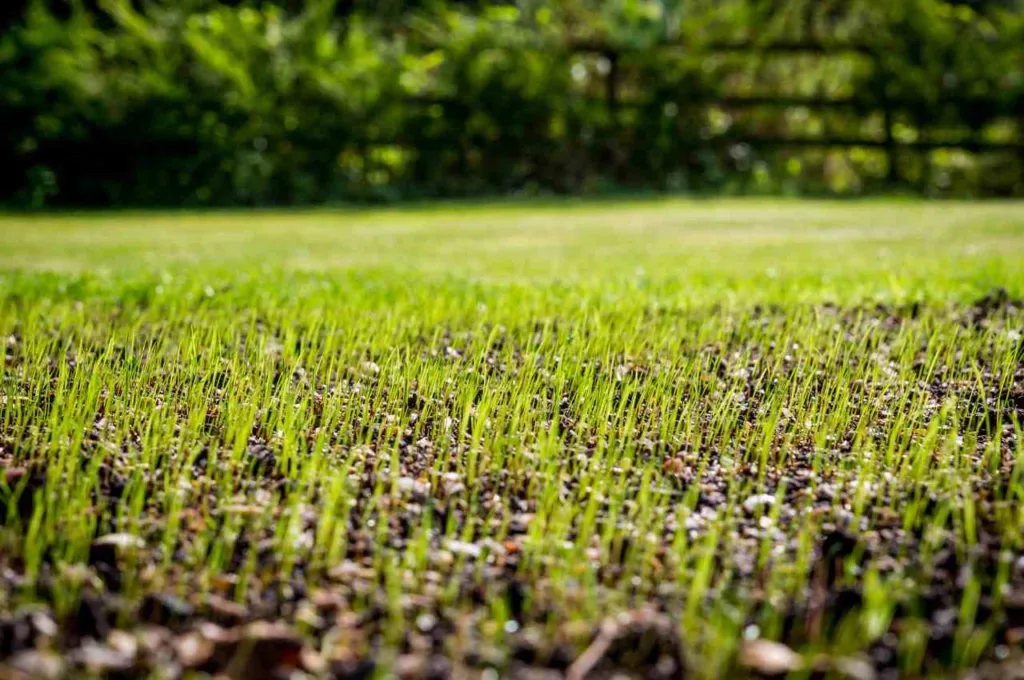
🌿 Grass Type
The grass type also affects how it copes in hot weather.
Certain grass types are designed to withstand hot climates, while others prefer cool weather.
As I mentioned, I don’t use warm season grasses in the UK. All our lawn grass varieties are cool season, so they’re designed to be more tolerant to heavy rainfall and cooler temperatures, rather than dry periods and hot temperatures.
🌧 Rainfall
The volume of rainfall that occurs during a warm spell will affect how your lawn reacts to the hot weather.
If we’re having a typical UK wet summer, our lawns are unlikely to be affected even if the weather is hot because the grass will still be taking in plenty of water from the soil.
But if it’s very hot and there’s no rain, it won’t take long for you to end up with a dry lawn, and mowing the grass will be detrimental to your grass health.
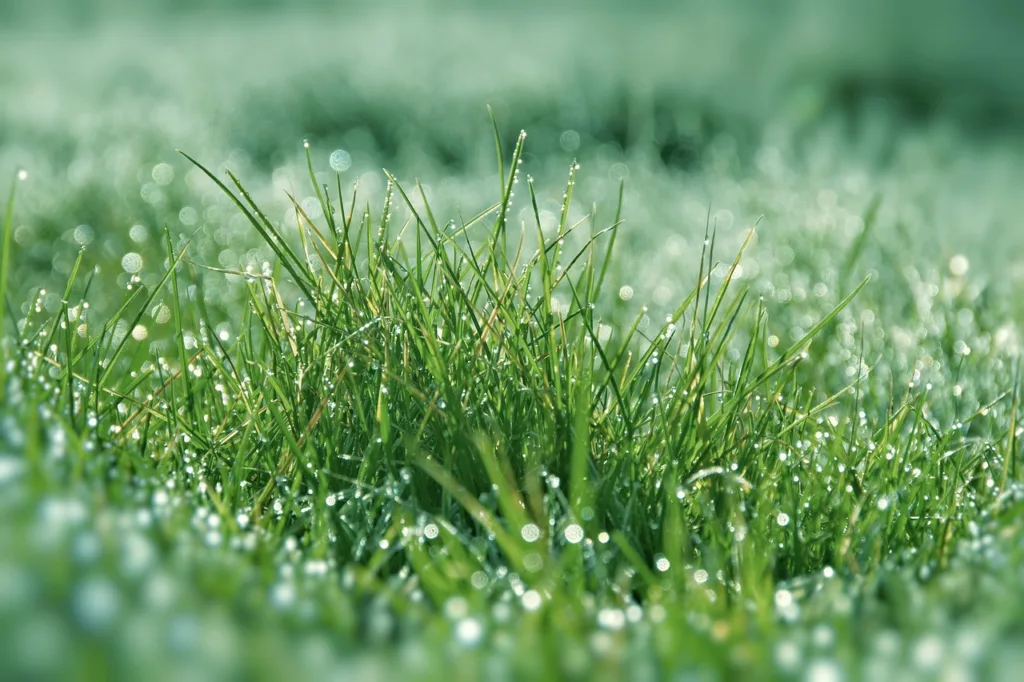
📆 Duration Of Hot Weather
The duration of the period of hot weather will also determine how your lawn responds.
If the dry, hot period lasts for just a few days, your lawn will probably bounce back in no time. But if it stays hot and dry for longer than a week, you can wave goodbye to a green lawn – you’ll probably notice that your grass looks dry and yellow during this time and for a couple of weeks after.
📝 Precautions To Take When Mowing Grass In Hot Weather
Got no choice but to make your lawn in the heat? Make sure to follow these precautions to reduce damage to your lawn when mowing:
Raise the height of your mower blades. This will limit the stress on your lawn by cutting off a smaller percentage of your grass blades.
Water your grass thoroughly after mowing. This will make up for any moisture loss from cutting the grass.
Consider using a mulching mower. The cut lawn clippings will be fed back onto the soil, helping to retain moisture and reduce evaluation.
You should also take precautions to protect yourself when mowing in the height of the summer. Mowing is difficult work, and exerting yourself in a 30+ degree heatwave can be dangerous. Try to mow in the early morning or late evening, when the weather is likely to be cooler and you’re at a lower risk of sunstroke or heat exhaustion.
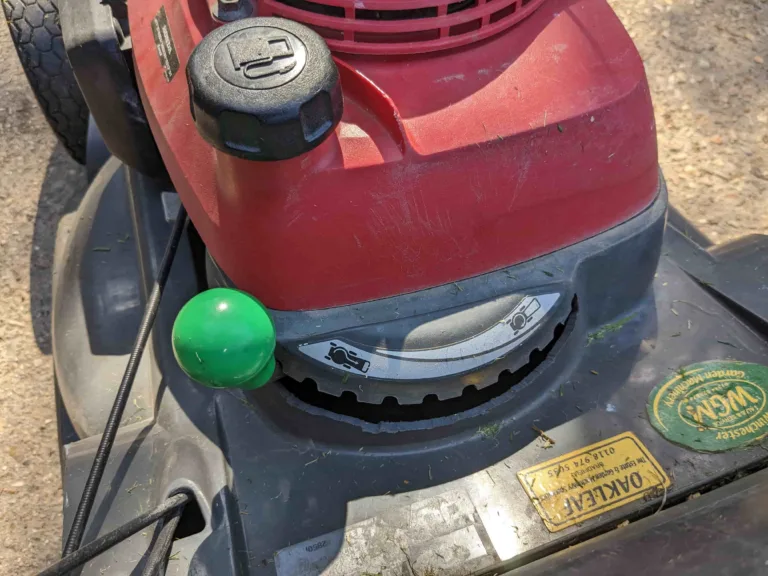
🥰 How To Look After Your Lawn During Hot Weather
If you’ve identified that you probably shouldn’t mow your lawn in hot temperatures, there are still some things that you can (and probably should) do to sustain a healthy lawn during a dry summer spell.
These include:
💦 Deep Watering
During dry spells, you need to act for mother nature and water your lawn to keep the soil moist and the grass alive.
It’s better to deep water your lawn – where you water it until puddles begin to form on the soil surface – once a week (twice if it’s really hot and dry) rather than lightly watering every day. You need the water to penetrate into the soil to prevent it from simply evaporating off the soil surface throughout the day.
☄️ Don’t Apply Lawn Treatments
You don’t need to apply lawn treatments during the summer months, and lawn feed is more likely to burn your lawn in the hot weather because there isn’t enough moisture on the lawn for it to make proper use of the feed.
You can use lawn feed during summer as long as there’s plenty of rainfall. Use your judgment here!
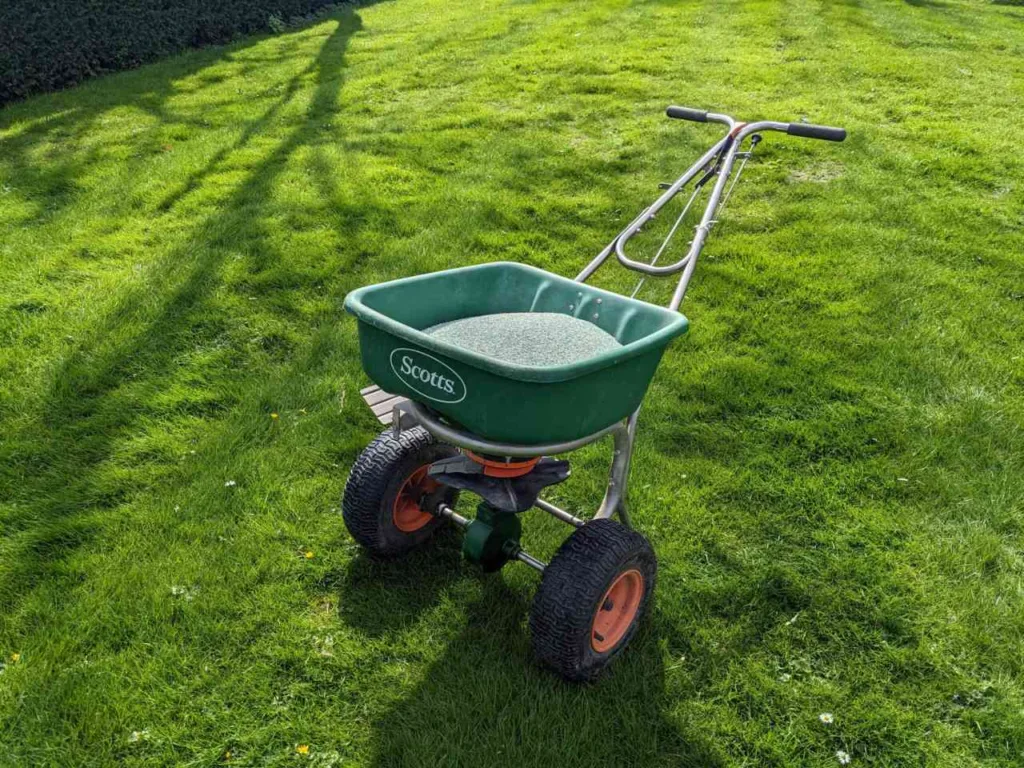
🧬 Use Wetting Agents
A wetting agent is a chemical formula that helps soil molecules to hold onto water.
You can apply a wetting agent to your lawn during the hot summer months to support healthy grass growth and reduce the likelihood of browning. I recommend the Richard Jackson Flower Power Wetting Agent, which works in seconds and has a lasting effect for around 30 days.
🏁 Final Word
Remember, longer grass shades the soil and prevents moisture loss, so it’s best to avoid using your lawn mower unless absolutely necessary during the hottest summer months.
The good news is that your grass growth rate should slow down when it’s warm and dry, so you should have plenty of opportunity to put your feet up and enjoy your lawn while you can – summer will be over before you know it!
